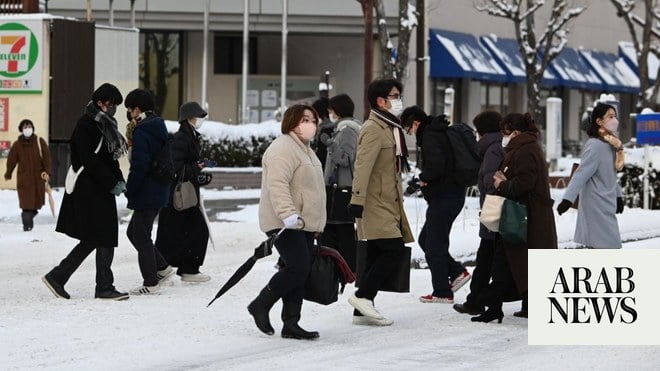
WASHINGTON — At least 20 people have died after a winter storm left millions without power in record-breaking cold weather in several parts of the United States.
The deaths included three people found dead after a tornado hit a seaside town in North Carolina and four family members who died in a Houston-area house fire while using a fireplace to stay warm.
The winter storm overwhelmed power grids and has immobilized the southern plains in the US.
Wind-chill warnings extended from Canada into Mexico. The weather is also likely going to delay COVID-19 vaccine shipments and deliveries.
North Carolina"s Brunswick County had little notice of the dangerous weather, and a tornado warning was not issued until the storm was already on the ground.
The National Weather Service was “very surprised how rapidly this storm intensified ... and at the time of night when most people are at home and in bed, it creates a very dangerous situation,” Emergency Services Director Ed Conrow said.
In Chicago, 46 centimeters of new snow forced public schools to cancel in-person classes for Tuesday. Hours earlier, along the normally balmy Gulf of Mexico, cross-country skier Sam Fagg hit fresh powder on the beach in Galveston, Texas.
Power outages affect two million homes in Texas
The worst US power outages were in Texas, affecting more than two million homes and businesses.
Texas officials requested 60 generators from the US" Federal Emergency Management Agency and planned to prioritize hospitals and nursing homes. The state opened 35 shelters to more than 1,000 occupants, the agency said.
More than 500 people sought comfort at one Houston shelter. Mayor Sylvester Turner said other warming centers were closed because they lost power.
Hundreds of thousands of people lost power across other parts of the country due to ice storms. Four million people lost power in Mexico.
Utilities from Minnesota to Texas implemented rolling blackouts to ease the burden on power grids straining to meet extreme demand for heat and electricity.
Blackouts lasting more than an hour began around dawn Tuesday for Oklahoma City and more than a dozen other communities, stopping electric-powered space heaters, furnaces and lights just as temperatures hovered around minus 22 degrees Celsius.
Oklahoma Gas & Electric rescinded plans for more blackouts but urged users to set thermostats at 20 degrees Celsius, avoid using major electric appliances and turn off lights or appliances, not in use.
Energy company Entergy that operates in the southern US said that the blackouts were being used to prevent longer power outages amid high electricity demand.
Nebraska"s blackouts came amid some of the coldest weather on record: In Omaha, the temperature bottomed out at minus 30 degrees Celsius, the coldest in 25 years.
The Southwest Power Pool, a group of utilities covering 14 states, said the blackouts were “the last resort to preserve the reliability of the electric system as a whole.”
The outages forced some to scramble to administer vaccine doses that need to be kept at ultracold temperatures.
Texas officials said more than 400,000 vaccine doses due now will not arrive until at least Wednesday because of the storm.
Meanwhile across the US, car crashes on icy roads and carbon monoxide poisoning as people used extreme measures to heat homes were reported.
Several cities had record lows: In Minnesota, the Hibbing/Chisholm weather station registered minus 39 degrees Celsius. Sioux Falls, South Dakota, dropped to minus 26 degrees Celsius.
At midday, more than 2,700 US flights had been canceled, led by more than 800 at Dallas Fort Worth International Airport and more than 700 at Bush Intercontinental in Houston.
Authorities pleaded with residents to stay home on Tuesday. About 100 school systems closed, delayed opening or switched to remote classes in Alabama, where forecasters said conditions might not improve until temperatures rise above freezing Wednesday afternoon. — Euronews











